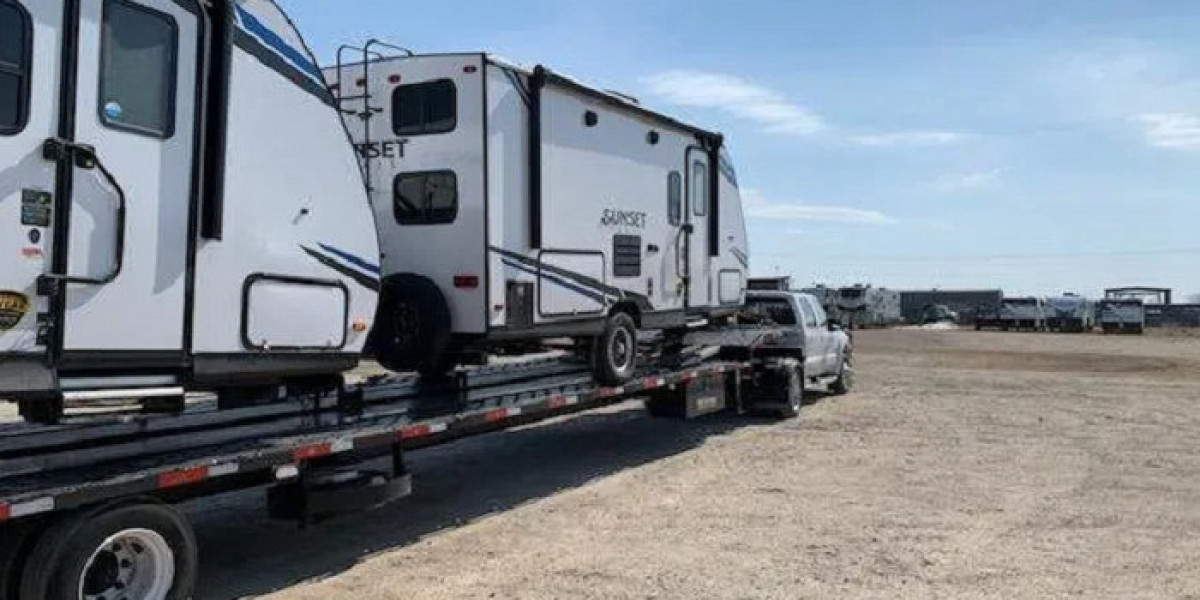Moving your RV can be a pretty intimidating task, especially when relocating for a new job, heading to a seasonal spot, or even just moving it for maintenance. Reliable RV transport is important to ensure your vehicle arrives on time and in the right condition. This guide will help you have a smooth and stress-free RV shipping experience.
Understanding the Reliable RV Transport Service
RV transportation is one of the auto transportation services designed to ship RVs. There are many methods available to transport a RV from one location to another, and understanding them will help you get reliable RV transport service according to your requirements. Some popular RV shipping methods are mentioned here.
1. Flatbed Transport
Flatbed Transport uploads your RV on a flatbed trailer. This is the best transportation for big and oversized vehicles. It prevents stability throughout its movement.
Advantages
Your vehicle has better protection.
Considerations
Generally the most expensive option.
2. Tow-Away Shipping
Tow-away shipping involves towing your RV behind a shipment truck. This is suited for short-distance movements.
Advantages
It can be used for short distances.
It's much cheaper than a flatbed transport, generally.
Considerations
The vehicles are exposed to elements.
It usually tends to affect the vehicle while it is being transported.
3. Drive-Away Shipping
This is where a professional driver will drive your RV from your location to the destination using this method.
Advantages
It is cheaper compared to the other shipping modes.
Considerations
Your automobile might get worn out from traveling.
4. Open Transport
Open transport is shipping your RV using an open trailer. One of the most cost-effective techniques is the open transport technique.
Advantages
Generally, more affordable.
Open trailers are prominent and readily available in the market.
Considerations
Your vehicle is exposed to the elements, which may put it at risk.
5. Enclosed Transport
Enclosed transport utilizes a covered trailer or container that offers maximum protection against harsh conditions.
Advantages
Maximum protection for your RV.
It offers tracking facilities that may serve to enhance your comfort .
Best suited for long-distance shipping.
Considerations
Costlier than open transport.
Trailers become limited, hence difficult to find.
6. Door-to-Door Shipping
This is the most convenient service where you are allowed to choose where you want them to pick and drop your RV. The driver picks up your RV directly from your address and drops it off in another place according to your instructions.
Advantages
Convenient picking up and dropping off.
It saves effort and time.
Considerations
This service is probably more expensive than any other service.
How Much Does It Cost to Ship an RV?
The cost of shipping a trailer will depend on several factors, including shipping method, distance, and other requirements. Here is a list of the most important factors that affect the cost of RV shipping.
1. Shipping Method
Variation in the price is broad when it comes to different transport methods:
Flatbed Transport: Widely considered as expensive to ship, from $800 to $2,000 or more, depending upon the size of the RV.
Tow-Away Shipping: Between $500 and $1,500 is the general range, which is relatively cheap for a short distance.
Drive-Away Shipping: The range of $0.50 to $2.00 depending on mileage and other fees that might be added for the driver.
Open Transport: Usually between $800 and $1,500 for the total cost, depending on the mileage of the RV and its size.
Enclosed Transport: Most protective type that usually ranges between $600 and $2,500, or more especially over long distances.
Door-to-Door Shipping: Usually with a surcharge of $200 to $500 to cover the full cost for the convenience
2. Distance
The distance of the transportation greatly affects the cost. The cost tends to be more expensive when the distance is greater due mainly to costs associated with extra fees for fuel and driver's time. Many companies operate on a per-mile price, and prices often go lower with longer routes.
3. Size and Weight of the RV
As usual, bigger and heavier RVs normally cost more for shipping. Oversized vehicles require special handling or permits, so shipping companies would normally charge you extra.
4. Season
The shipping cost can also depend on the season. It is normally higher during peak seasons like spring and summer, when most people are traveling.
5. Insurance
You would do well to factor in the cost of insurance coverage during transport, which can add an extra to your total. Others will also charge for loading/unloading or special handling.
6. Location
Pickup/drop-off locations can also influence your costs. Different locations can be farther out, less accessible, etc., and hence charge higher fees due to the distance and effort required in transporting the product.
Conclusion
Reliable transport for RVs does not have to be a hassle. Knowing your options, preparing properly, and hiring a respectable service will make all the difference for a smooth ride. Whether opting to hire professionals or going it alone, keep these tips in mind for a hassle-free experience when transporting your RV.








